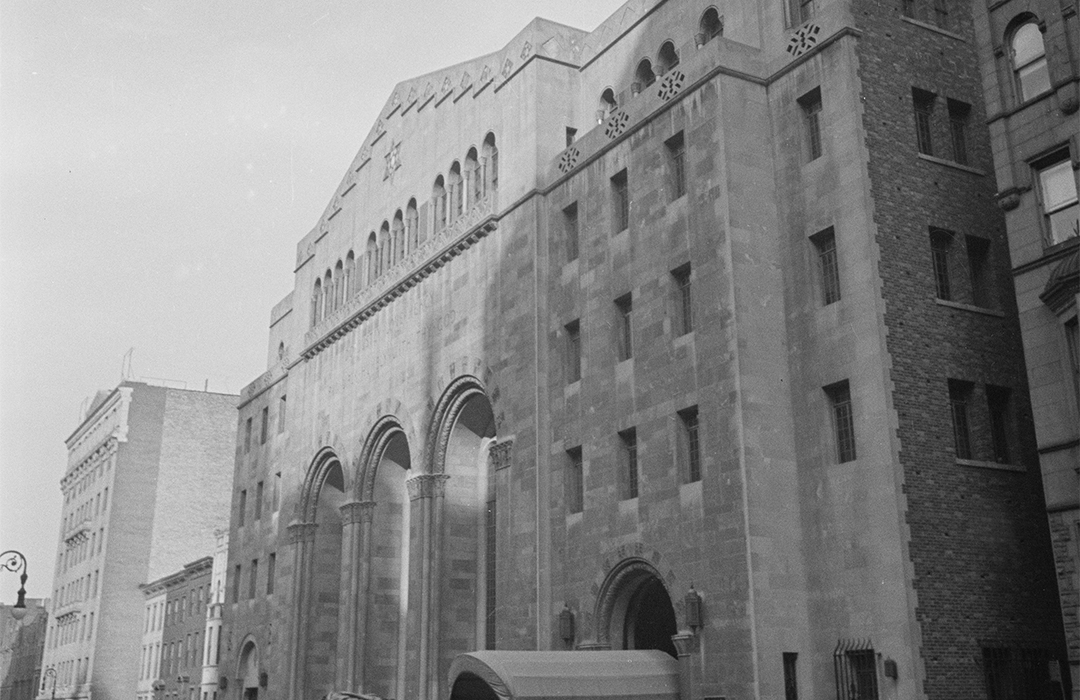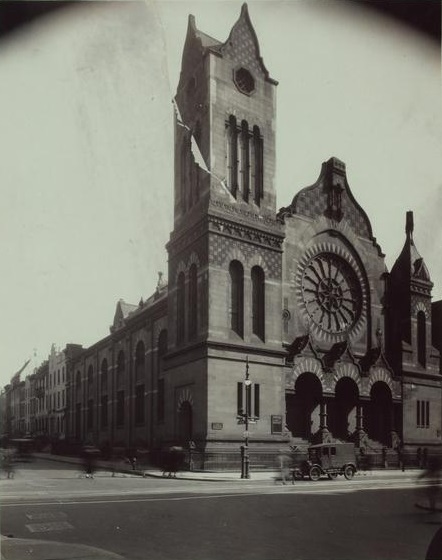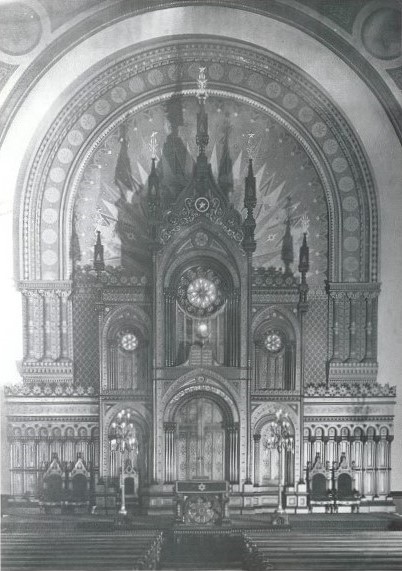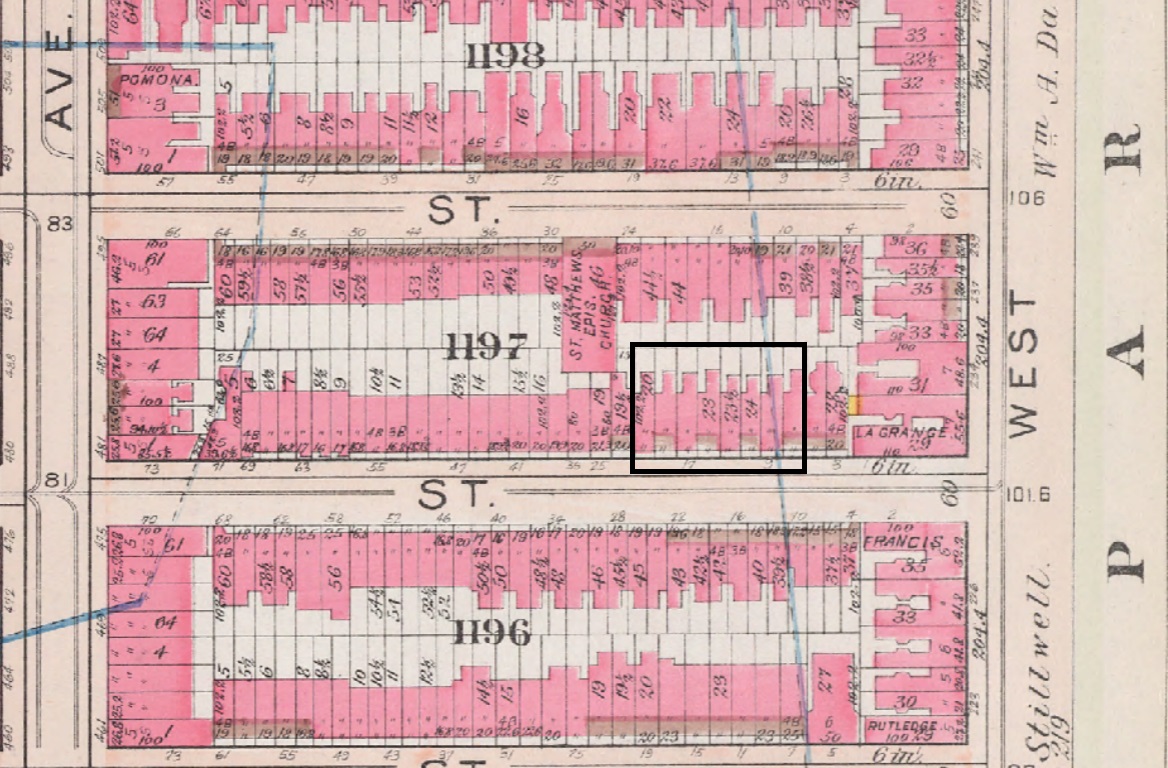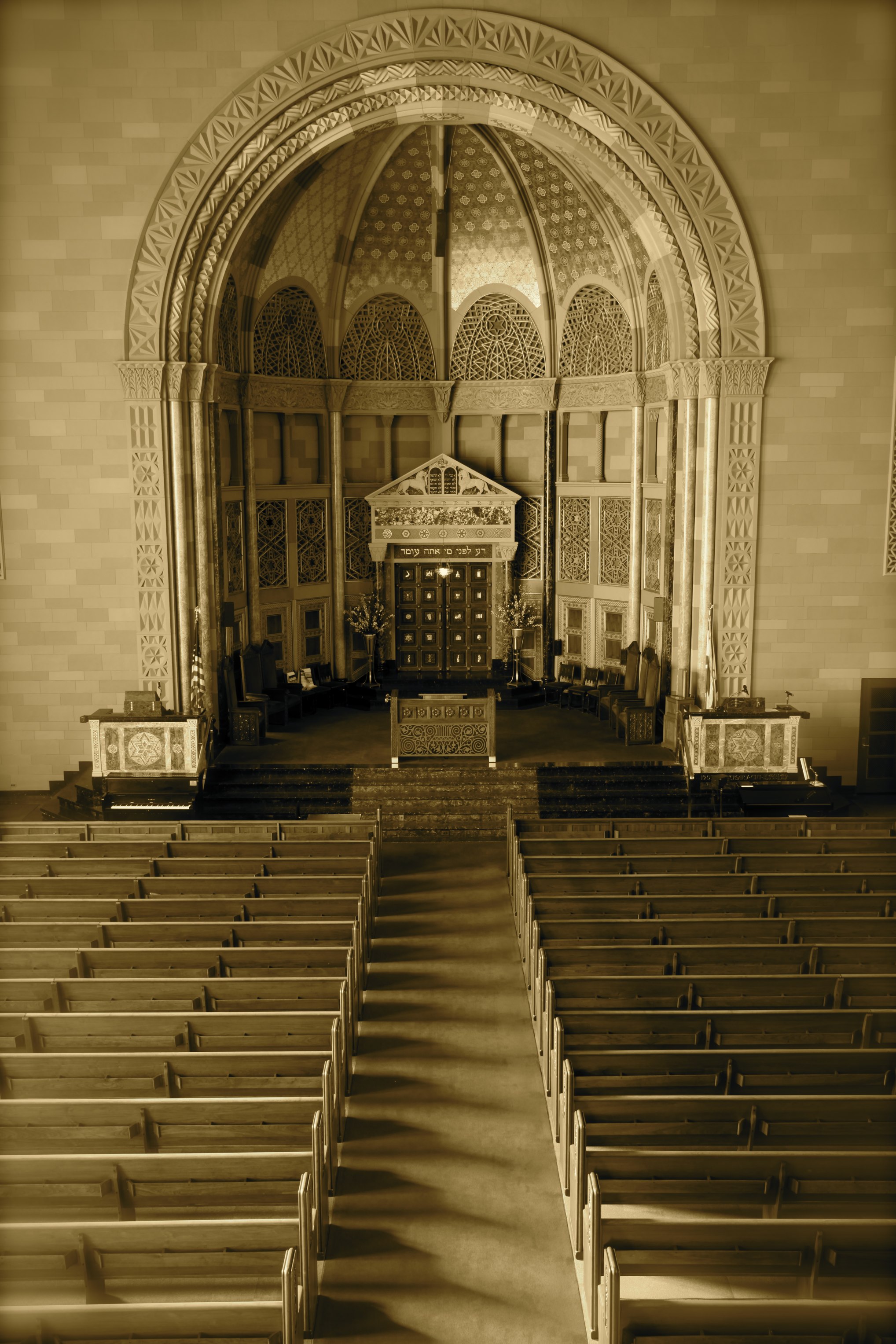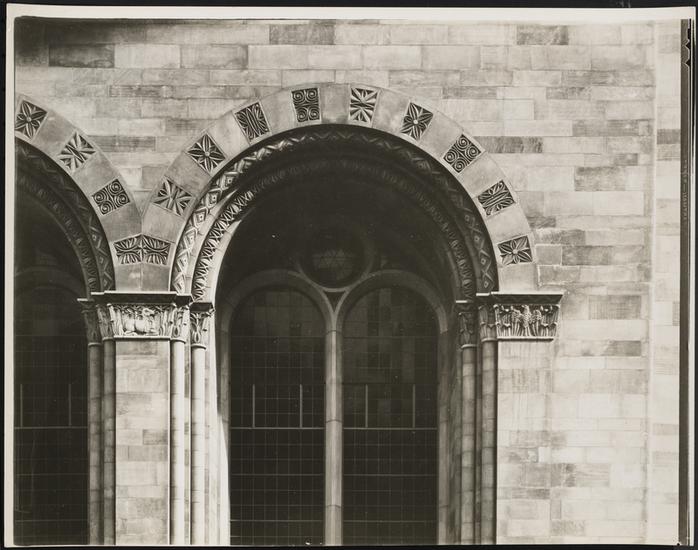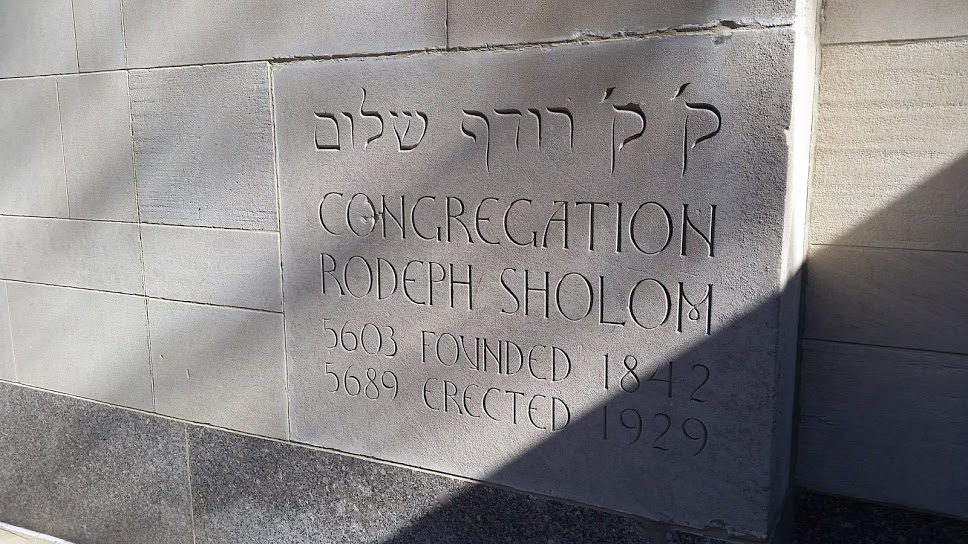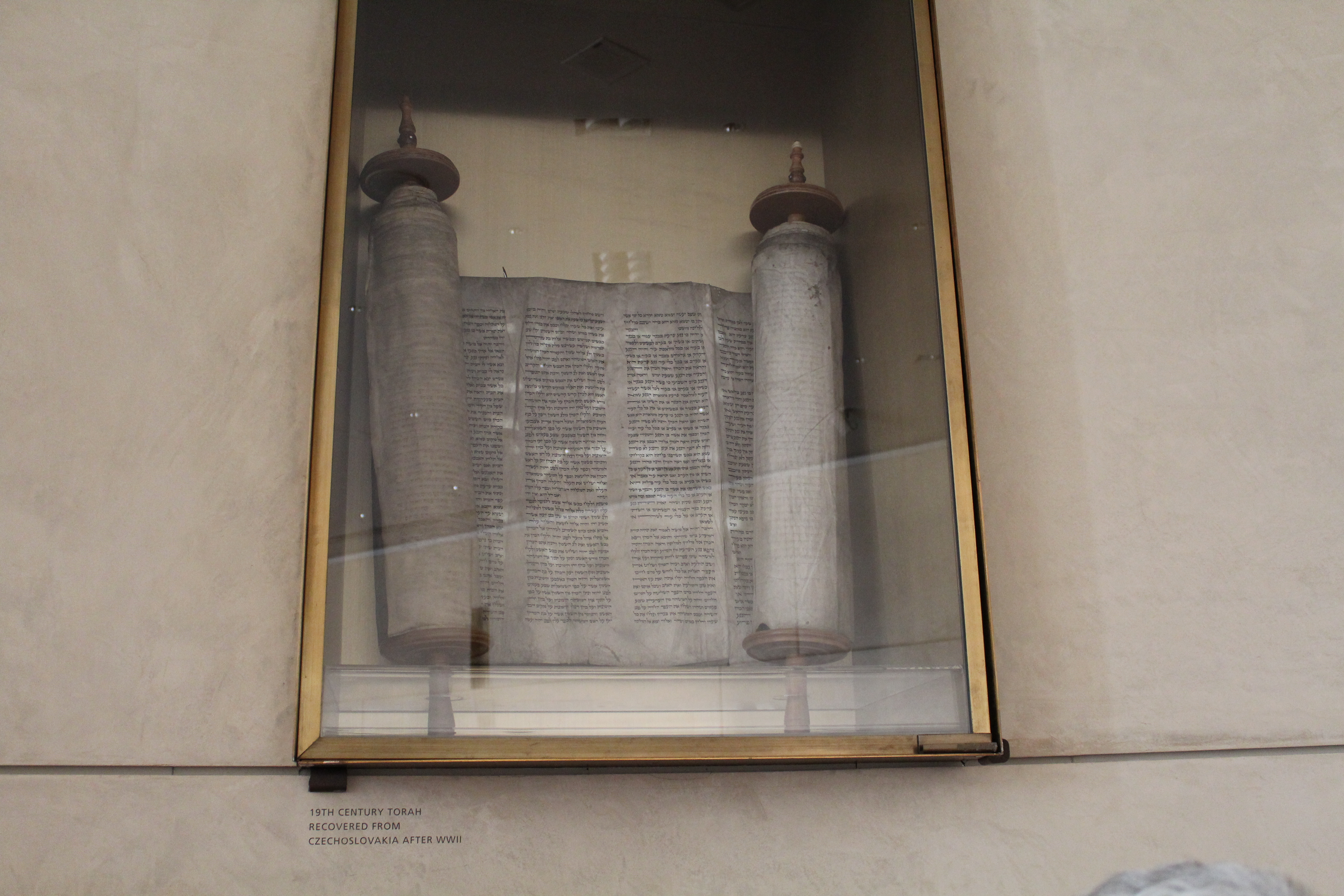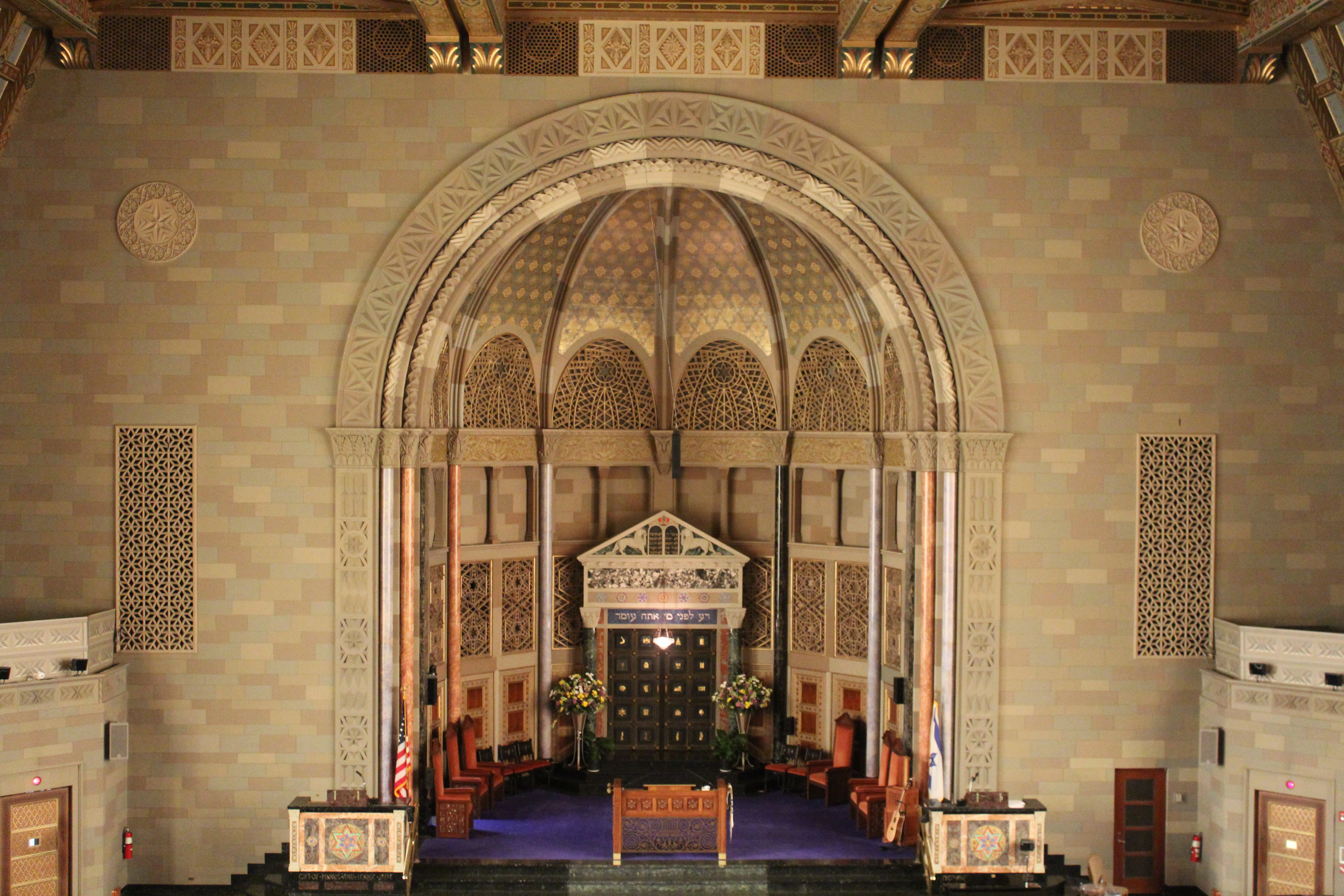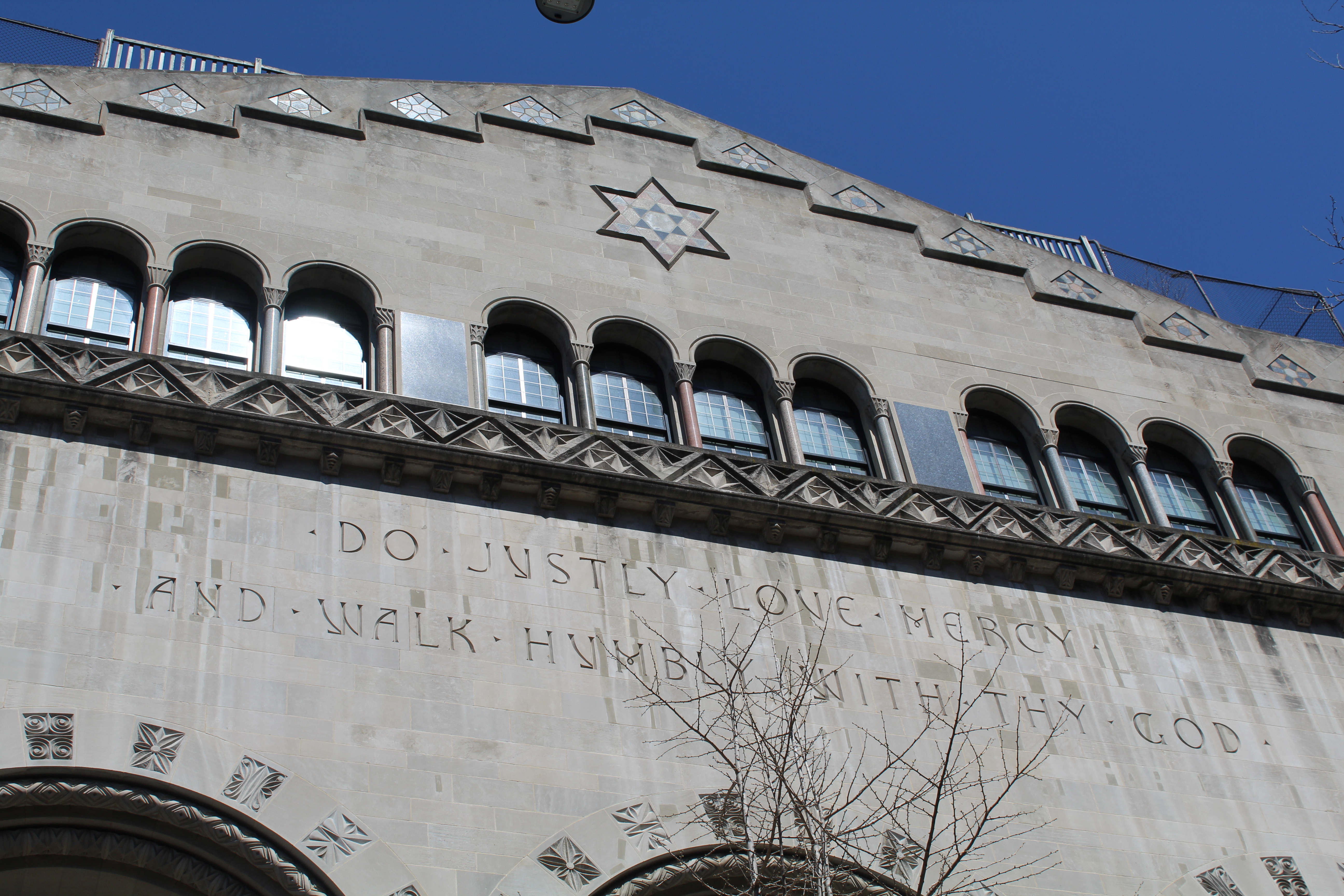7 West 83rd Street
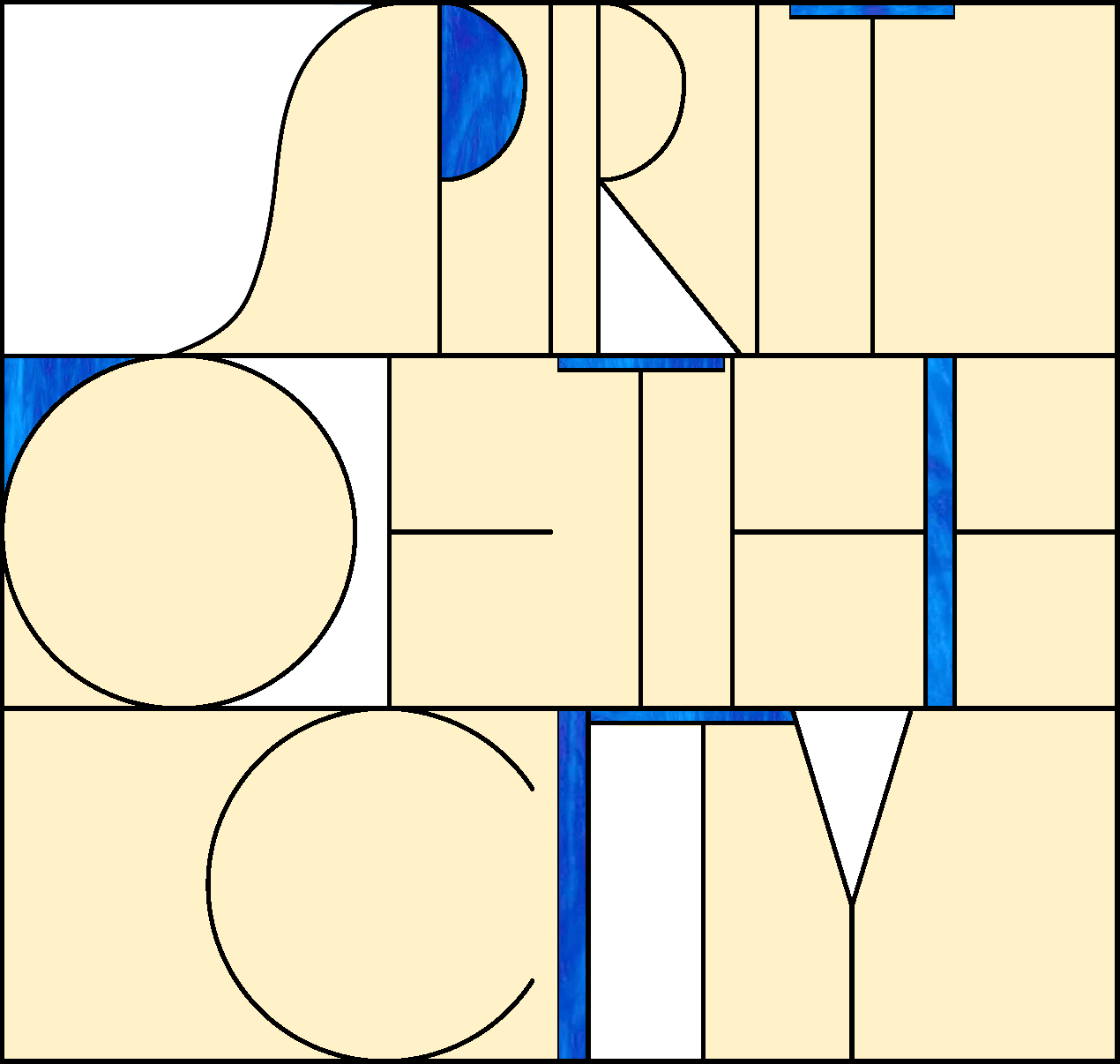
Congregation Rodeph Sholom
7 West 83rd Street
by Megan Fitzpatrick
Congregation Rodeph Sholom is a testament to continuity through renewed change throughout the years from their foundation almost 200 years ago. One of the oldest Jewish faith congregations in the city, beginning with 80 German immigrants who signed an agreement in 1842 at 157 Attorney Street in the Lower East Side.
The congregation went through several changes over the course of its long establishment, from spirituality to location. The original German founders established an Orthodox congregation named Rodeph Sholom, Hebrew for pursuer of peace. The original charter, drafted by the newly arrived immigrants, free to practice their religion and set up sanctuaries that would also serve as centers of social and cultural life, emphasized the immediate need to organize to worship, to visit the sick, to help new immigrants, and educate the young. The first Rabbi, Rabbi Merzbacher, left the congregation, after only two years, over a dispute regarding the use of sheitels by women members. He believed they were not necessary, but the congregation disagreed.
In 1853, they moved to the congregation’s first purpose-built synagogue at 8 Clinton Street. The congregation doubled in size in under 10 years, so a larger space was necessary. At this sanctuary, two influential Rabbis preached, the “liberal” Rabbi Huebsch and Rabbi Aaron Wise, father of an influential Rabbi in his own right, Stephen S. Wise. Under Rabbi Aaron Wise, the congregation underwent significant change. In 1875 the congregation was rededicated with Conservative services, which included using a choir and organ for the first time, and even some sermons being delivered in English, which up until then were solely in German.
The congregation passed a resolution to move again, two years after a fire broke out at the Clinton Street synagogue, citing a need for a larger space for the ever-growing community, and a change in demographics. The building on Clinton Street is still in use today by Congregation Chasam Sopher, making it one of the oldest surviving synagogues in the city.
Rodeph Sholom purchased the former Temple Beth-El synagogue located on the corner of Lexington Avenue and 63rd Street and held their first service on September 4, 1891. The congregation found its footing in this location and began to branch out into social action, establishing the Rodeph Sholom Sisterhood and the Women’s Association which was formed to implement the work of the Sisterhood, aiding refugees suffering from persecution in Russia, and helping victims of the San Francisco earthquake that occurred in 1906.
In 1875 the congregation was rededicated with Conservative services, which included using a choir and organ for the first time, and even some sermons being delivered in English, which up until then were solely in German.
Upon the sudden death of Rabbi Aaron Wise, his son was asked to be his successor but he declined. This left the congregation with an immediate need to find a replacement. Rabbi Rudolph Grossman was appointed one year later.
At the turn of the century, the congregation continued to make transitions that would usher in significant change. They rededicated once more, now to a Reform congregation, solidified by joining the Union of American Hebrew Congregations in 1901 and the introduction of a revised Prayer Book, which would be used for many years. This change also meant that men in the congregation no longer had to wear hats and the abandonment of the second day of Rosh Hashanah.
The congregation also decided to move one more time. The residential shift uptown was reflected in the decision to move to Lexington Avenue, but an increasing number of the congregants were living on the Upper West Side, and this new location would allow them to better “establish and carry on more comprehensively communal and social work” as reported in the New York Times. Additionally, Temple Emanu-El announced plans to build their enormous sanctuary and community house, not too far away at Fifth Avenue and 65th Street, possibly contributing to Rodeph Sholom’s decision to relocate. The congregation sold the Lexington Avenue site in January 1926 for an undisclosed amount, but the property had an estimated worth of $800,000 at the time of sale.
The site was quickly snapped up by Amri Realty Company with plans to develop an apartment hotel estimated to cost $5,000,000. This would become the landmark Barbizon Hotel for Women at 140 East 63rd Street, designed by Murgatroyd & Ogden. The New York Times originally reported that developers were looking to collaborate with Emery Roth on this project.
Rodeph Sholom ultimately chose West 83rd Street, about 200 ft. from Central Park, to erect their new edifice. They purchased eight rowhouses, 7-21 West 83rd Street, to make way for construction. Architect Charles B. Meyers was recruited to design the new purpose-built sanctuary. An alumni of City College and the Pratt Institute, Meyers specialized in designing public buildings, including about a dozen New York City hospitals, most notably the Bellevue Psychiatric Hospital building (1931).
In addition to hospitals and schools, Meyers began designing religious buildings. In 1926, his building for Congregation Ohab Zedek at 118 West 95th Street was complete. This design followed a tried and true formula of synagogue design of the period, which can also be seen at the former Unity Synagogue, B’nai Jeshurun, and the Park Avenue Synagogue to name just a few. This formula consisted of a “single vast portal dominating an otherwise blank facade, as Stern, Gilmartin, and Mellins explain.
Meyers’ other creation, for Congregation Rodeph Sholom, diverged from this trend, maintaining its Romanesque style, but adopting some Byzantine elements, creating a robust and ornamented Indiana limestone facade. Considered the largest of the midblock synagogues of the period, it featured a tripartite facade, divided by two entrances at either end of the building, whose residential facades relate to the scale of the block. A central block projects slightly out from the row and commands attention with an arcade of three large windows, flanked by a series of ornamented columns. Above the window openings is an inscription from the book of Micah, “Walk Humbly with Thy God”, along with a large Star of David symbol at the center, fashioned in mosaic. Inside the sanctuary is a mix of golden hues with intricate fretwork and engraved wooden panels on the walls and doors, particularly inside the dome that frames the ark in the auditorium.
Hundreds attended a rainy cornerstone ceremony in May 1929, where it was promised the approximately $2,000,000 edifice would be complete before the Holy Days the following fall. The synagogue was completed earlier than expected and dedicated in March 1930, on the date of the Jewish holiday, Purim. At the helm was Rabbi Louis I. Newman. The four-day dedication ceremony coinciding with a holiday was a monumental affair accompanied by the chanting of Cantor Nathan G. Meltzoff, a long-time active member of the congregation, who served as cantor from 1915 to 1952.
The Rev. Dr. Nathan Krass of Temple Emanu-El, who attended the ceremony, lauded the newly built sanctuary and declared in his speech that the building of the temple occurred at a time of great skepticism and people “do not invest in such magnificent structures unless there is a great spiritual power compelling them to do so.” The building of the synagogue also occurred at a time of great economic instability, just as the Great Depression was taking hold of the city. The construction was not delayed or halted because of that and the congregation continued to thrive.
The synagogue was completed earlier than expected and was dedicated in March 1930, on the date of the Jewish holiday, Purim.
The congregation was extremely active in various arenas of social action throughout the years, particularly in the war effort. Rodeph Sholom became a model for congressional involvement in World War II and under the direction of the War Activities Committee, served as a distribution center for items sent to troops overseas and as a headquarters for local air raid warden and air defense groups.
The congregation began to foster a new view on early childhood education in the 1950s with the foundation of a nursery, but in 1970, they broke ground by establishing their Day School, the first Reform Jewish day school in the U.S. The school at 12 West 84th Street, around the corner facing the next block, follows a 1970s modernist style.
Congregation Rodeph Sholom can celebrate many notable accomplishments over its long history, with some notable people, including the first woman rabbi and second LGBTQ-identifying rabbi to serve a mainstream Reform Congregation, Camille Shira Angel, appointed in 1995. Over the years, the building has welcomed renowned guest speakers including Stephen S. Wise, Presidential Candidate Wendell Willkie, Senator Jacob Javits, Franz Werfel, Sean O’Casey, Orson Welles, Jan Masaryk, and held the funeral of the man who designed it, Charles B. Meyers, in October 1958.
In the ever-expanding nature of the congregation and indeed New York, they looked to build onto the structure and created a rooftop chapel in 2003. This new chapel houses the Holocaust Torah, a sacred scroll confiscated by Nazis in Czechoslovakia and later bequeathed to the congregation by a past president, in memory of survivors of the Holocaust.
SOURCES
‘Temple Rodeph Sholom Sells 63rd St. Sit’, New York Times, January 31, 1926.
‘Begins Dedication of Jewish Temple’, New York Times, March 15, 1930.
Congregation Rodeph Sholom, ‘Our History’ https://rodephsholom.org/about-us/our-history/.
Dunlap, David W., From Abyssinian to Zion: A Guide to Manhattan’s Houses of Worship. New York: Columbia University Press, 2004.
Horowitz, M.L. and Hartman, E.A., Divine new york: Inside the historic churches and synagogues of Manhattan. New York: Abbeville Press Publishers, 2022.
White N., Willensky E., Leadon F., AIA Guide to New York City (5th edition). Oxford Univeristy Press, 2011.
Stern Robert A., Gilmartin G., Mellins T., New York 1930: Architecture and Urbanism between the Two World Wars. New York: Rizzoli, 1987.
LPC, ‘Upper West Side/Central Park West Designation Report’, April 24, 1990.
Stern Robert A., Gilmartin G., Mellins T., New York 1930: Architecture and Urbanism between the Two World Wars. New York: Rizzoli, 1987.
Megan Fitzpatrick is the Preservation and Research Director at LANDMARK WEST!
Building Database
Be a part of history!
Learn more about Congregation Rodeph Sholom:
Meet Cantor Shayna De Lowe!

